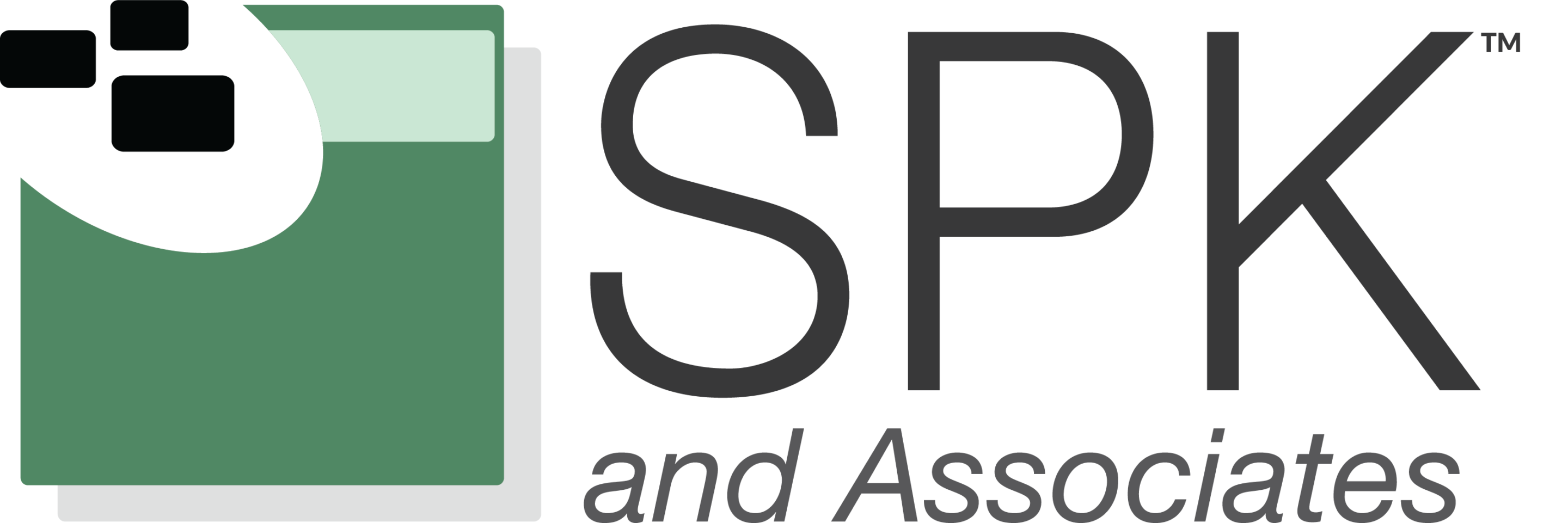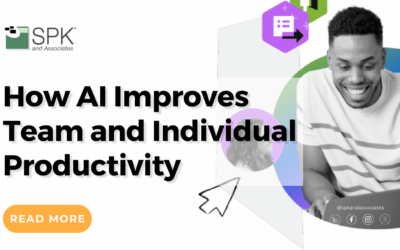Introduction
Hi everyone, welcome to SPK Associates’ video here today. This video is entitled, “You Don’t Need a Gantt Chart for Agile, You Need a Clear Path.” My name is Michael Roberts, Vice President of Sales and Marketing at SPK Associates, and I’m here today with Marc Brickley. Marc, feel free to introduce yourself.
Yeah, Marc Brickley. I’m one of the Directors of Application Development at Moser Consulting, a 300-employee full-service IT consulting company in Indianapolis, Indiana. I’m also the product manager of an app we created for the Atlassian Marketplace called Clear Path for Jira. We have a group within Moser Consulting called Moser Labs, which creates B2B apps, and Clear Path is one I’m involved in.
The Challenges with Gantt Charts
Awesome. Thanks for being here, Marc. We’re going to talk about some serious challenges here. So, if you’ve ever tried to apply traditional project management tools like a Gantt chart to Agile, you might find yourself a little frustrated. It’s like trying to steer a speedboat with an anchor dragging behind you. Gantt charts have their place, but in Agile, they often end up creating more confusion than clarity. So, Agile teams don’t need those rigid timelines. They need a much clearer path to help deliver value, iterate quickly, and adapt to change.
Why Do You Believe Gantt Charts Don’t Fit in Agile?
So, Marc, the title of this video is “You Don’t Need a Gantt Chart for Agile, You Need a Clear Path.” That’s a pretty strong statement. What do you have against Gantt charts?
Well, personally, I don’t have anything against Gantt charts, but you and I are very aligned on our approaches to when it’s appropriate or right to use a Gantt chart. Gantt charts are a great tool for projects where you’re trying to organize cross-functional teams. For example, if you have a product launch and you need your Marc eting group, your sales, your customer success, and your tech support all aligned on dates and deliverables, it keeps everybody on task. They’re also great for hardware projects. Because it’s so successful in those cases a lot of people have the inclination to apply them to agile software projects because a Gantt chart is something that feels familiar to people. But if you’ve learned agile and your employing it at the same time the Gantt chart feels out of place.
Why Does the Gantt Chart Feel Out of Place in Agile?
So, the question is, why does it feel out of place? If you’re familiar with Agile philosophy, part of it is that you’re specifically trying to get rid of parts of your processes that don’t produce value in the product. A couple of terms from the Agile Manifesto: In Agile, you’re about conversations, not comprehensive documentation. Also, the measure of progress is a working product. So when you think about a Gantt chart, what is it? Oh, it’s comprehensive documentation. And then, what happens with those is you create this big project plan to a detail but then a couple days later something changes and what do you have to do? You have to replan. You have to go update things. So what you’re doing is you’re constantly updating that documentation when those hours of work and theory could actually be improving the product.
Why Is Fuzzy Math Better Than Detailed Estimates in Agile?
Also, with Gantt charts, in order to use them effectively, you need detailed estimates. Those are usually things done in hours or days, but in Agile, you’re embracing more of a concept of fuzzy math. You don’t usually estimate in hours; those are specific cases like tasks or spikes. What you’re estimating a lot of are user stories, and you estimate those in story points, which is more of a range of time, and you put them in buckets called sprints. With that fuzzy math, you’re empowering your team to deliver value to achieve outcomes in ways that they should. What you want from their progress is what you want as a projection not a plan. Agile is about projections not plans.
How Does a Gantt Chart Lead to Too Many Meetings?
The last reason why I’m not as much of a fan of Gantt charts for Agile development is that, in order to do a good Gantt chart, you have to get a lot of information, which means you have to talk to a lot of people. You have to have a lot of meetings. Once you have all the information in the Gantt chart, you need to have another meeting to roll it out to everybody, and then when you have to replan, you have to have another meeting with all the stakeholders to show them the changes. In Agile, you want to spend less time in meetings and more time delivering value. Putting those things together shows why a Gantt chart just isn’t right when what you’re doing is agile software development. You should be embracing change, not the rigidity that comes with the Gantt chart.
Why Is Clear Path for Jira a Better Option Than a Gantt Chart?
I love it! I love it! So, the next side of this, your team has developed a tool called Clear Path for Jira. Why do you believe Clear Path is a better option than a Gantt chart?
When we developed it, we specifically developed it for our own internal Agile teams. We weren’t developing it to give it to other companies. We saw our own teams, where we had some junior product owners, and we wanted to be able to upskill them as well as improve client satisfaction and team happiness. So, these pictures that I would help them draw on whiteboards in different meetings to help them visualize the work, we just kind of said, “You know what? All this information is in Jira. Wouldn’t it be great if we just click a button and bam – the visual’s there instead of having to do these manual diagrams?
How Did Clear Path Help Teams Meet Tight Deadlines?
So, we developed the app internally and deployed it out to a couple of our teams. One of them had a really tight deadline that a client needed. There’s this thing called “COVID20 y” that a lot of companies struggle with, and they had tight deadlines to increase revenue and deliver results. A client really asked us to do something that seemed impossible. But once we had it in the Clear Path tool, we had the visualization. The team could see this is the critical path of all the tasks, all of your user stories. If we can get this done in time we can get the project done. Everybody started believing that and rallied together to execute. We delivered it in time for that client and we continue to honor other consulting projects that we have.
How Does Clear Path Improve Team Satisfaction and Client Success?
I really believe in it because I’ve seen it work. I’ve seen product owners become better product owners. I’ve seen teams have more satisfaction because they seem to feel like they’re in the know more. They can go into Jira, pull up this visualization, and understand how all the different pieces of the puzzle of the backlog fit together to have a plan and really achieve the outcome they want. We’ve had clients more satisfied because we can deliver even more value than we already were doing in a shorter period of time. That combined success made us say this could be great for a lot of other companies as well. That’s what made us decide to put it in the Atlassian marketplace.
I love it! The teams actually seeing the visualization and believing it leads to a huge boost in productivity. When people believe the work is doable you get a lot of value from that.
Correct.
What Roles Are the Primary Users of Clear Path?
Marc, what roles are the primary users of your product?
It’s going to depend on how the organization is laid out. Specifically, companies at different scales might have different roles. You might have just a single product manager, or your product roles might be split between a product manager and product owner. But generally, the power user is going to be whoever creates the bulk of the tickets, specifically the user stories, tasks, and epics. So, that could be your product manager or product owner. In some companies, that could be a BA. In really large organizations they have an engineering role that does that. They’re the ones building the backlog and getting it ready for backlog refinement. But in the end, everybody on the team can get value out of it because our teams do backlog refinement in Clear Path. They bring up all the tickets and everybody’s immediately on the same page of how we’re stepping through development. What’s the implementation order? What are the assumptions that I have of what is and isn’t developed when I’m doing my story pointing?
How Does Clear Path Help Distributed Teams?
So, it’s really bringing teams together. A number of our teams are also distributed. We have people in different time zones, so sometimes you’re working, and the rest of your team is done, or maybe you have a question, and your product owner is in a meeting, and you can’t get a hold of them. What they can do is go into Clear Path, pull the data out, see the visualization, and answer the questions themselves, without having to wait for that synchronous communication. It’s really helping the team deliver value.
What Advanced Use Cases Does Clear Path Solve?
Keep moving. I love it. So, given that there’s so much data and information in Jira and within Clear Path, are there any problems that Clear Path solves that may not be as obvious to the casual user?
Yeah, there are definitely some advanced use cases. Some of the problems we solve, like it’s going to help junior teams right off the bat, but if you’re an experienced person in product and you’ve been doing development for quite a while, the ability to estimate product increments is something that comes in very handy. That’s actually something that I’m known for as my superpower at Moser Consulting. If anything’s a big project, they bring me in to do the estimate, and how I do that is actually—I use Clear Path. I skeleton out a whole bunch of user stories, what I think the scope is, and look at the dependencies. Then in Clear Path, we have the ability to analyze your critical path. So I go and I click a button called the “sprints” button and it will outline the longest chain of serial tickets that have to be executed in your project. That’s really what’s driving your schedule.
How Does Clear Path Help in Estimating Product Increments?
If you zoom in at the first ticket of that chain, it’s going to tell you how many there are. So, if it says seven, roughly, you already know your starting point is probably about seven sprints. Because in Agile, there’s a general philosophy of you don’t put two tickets in the same sprint that block each other. So, I know that’s my starting point, but because of this visualization, I can quickly get a grasp of: Are there any sprints that maybe have too many tasks that can be completed in a single sprint? I need to split it up.
How Fast Can You Estimate Large Projects with Clear Path?
Why or how it does that is every row in Clear Path is kind of synonymous with a theoretical sprint. So, I can look and say, “Okay, my starting point is seven sprints, here’s an area where we have a lot of work that can be parallelized. Maybe I need to add two more, so we’re up to nine.” But let me look early on. Actually, there’s very few tickets we can parallelize; there’s so much serial work that the team’s got to ramp up. So, then maybe I need to make another adjustment there.
Once I have the tickets in Jira, I can generally estimate large projects in a matter of minutes—definitely less than an hour. So, once you get familiar with it, I have a video on YouTube that kind of talks about that process. Some people will be amazed with it. It’s kind of like a superpower that people will be amazed with.
What Do You Like Most About Working on Clear Path?
So, Marc , what do you like most about working on Clear Path?
Very good question. I would say, anybody who knows me has heard me say this many times: I just like to do things that improve people’s lives. And I do that in a variety of ways. Whether it is helping kids with their self-confidence through coaching youth sports, something I’ve done for 20 years. Or for about a decade, something that I did was I worked on software for pilots and military aircraft. So, the software that I was doing was literally making changes to help save people’s lives or protect the lives of the military and civilians so it was a very fulfilling thing. In the case of Clear Path, what I’m doing is working with an amazing team of people. I really respect them a lot, we do great work, and we’re creating a product that’s improving the lives of people all across the world doing agile development. It’s helping them feel happier and more fulfilled with the work that they do because they understand what the purpose is. They feel like there’s less wasted work. They have a purpose and a vision very clear in the app and then they go off and execute. The simple fact is most of the improvements I’ve done (like from a microcosm standpoint) the people I interact with daily and to now I’m working on an app that has a global reach to improve people’s lives all across the world. That’s pretty amazing. I really appreciate my team at MOSER Labs and how we’ve worked to accomplish that.
Closing Remarks
Awesome story. I love that! Having real motivation to deliver product value—that’s an awesome story. Thank you for sharing.
So, folks, there you have it. Agile isn’t about sticking to those rigid timelines; it’s more about having that clear path to keep your team aligned, adaptable, focused, and really good at estimating. Instead of relying on those Gantt charts, make sure you’re using this approach. This is actually something that, when I saw it years ago, I said, “We need to align to this and make sure we’re promoting it so other people know that it’s there.” So, we’ll make sure we put a link in the description to Clear Path for Jira in the Atlassian Marketplace.
Marc, thank you for your time and attention here today. I appreciate it.
No problem, thank you for having me.
If you found this video helpful, don’t forget to like, subscribe, and drop a comment below. We’d love to hear how you’re managing your Agile planning today. If you’re looking for some expert guidance on Agile workflows in Jira, make sure you reach out to SPK Associates. We’re an Atlassian Gold Solution Partner and have experience helping people get the most out of their Atlassian investment. Thanks for your time, thanks to Marc , and thanks for watching. Till next time!






